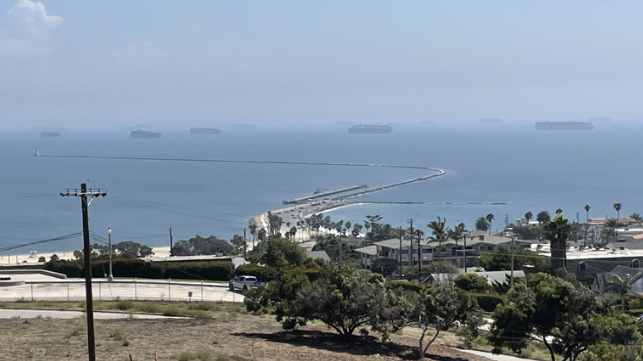Delays and Backlogs Prompt NRF to Lower U.S. Ports TEU Import Forecast

Pandemic-related supply chain disruptions around the world, the lack of containership capacity, and backlogs and congestion are starting to take their toll on U.S. retailing imports according to new data and forecasts from the National Retail Federation. The retailing trade group highlighted that double-digit growth in imports at the nation’s largest retail container ports is slipping to single digits as they projected a plateauing of volumes in the coming months.
Due to the impact of a range of issues, the NRF lowered its forecast for import volumes for August at the major U.S. container ports by five percent. Despite August marking the beginning of the peak season when retailers stock up on holiday merchandise, and many retailers trying to move up shipments to ensure that sufficient inventory will be available during the holidays, the Global Port Tracker forecasts that container volumes will remain steady at 2.1 to 2.2 million TEU for the remainder of 2021.
“We’re seeing issues ranging from port closures in Asia to ships lined up waiting to dock at U.S. ports,” said Jonathan Gold, the NRF Vice President for Supply Chain and Customs Policy. “That’s creating continuing challenges as retailers work to supply enough inventory to meet demand. The administration’s recent appointment of a supply chain task force and a port envoy are major steps forward, and we look forward to working with officials to find solutions.”
The NRF had forecast the busiest August on record with a peak of 2.37 million TEU, which would have broken May’s record of 2.33 million TEU for the largest number of containers imported during a single month since NRF began tracking imports in 2002. Forecasting that some cargo anticipated in August may have been delayed into September due to the COVID-elated closures of terminals in Vietnam and China as well as the backlog of ships primarily at the Southern California ports, the NRF lowered its August forecast to 2.27 million TEUs.
The disruption in the supply chains in August led to late ship departures and bottlenecks in the movement of imports that are now having an increasing impact on ships. The Marine Exchange of Southern California, which manages traffic to the ports of Los Angeles and Long Beach reported that today the ports set two new records and anticipated a third before day’s end. There are a record 79 containerships in port with a record 49 additional containerships at anchor or in the drift areas.
“A huge 49 vessels are scheduled to arrive over the next three days, which is 12 more than the normal level,” said Captain Kip Louttit, Executive Director of the Marine Exchange of Southern California & Vessel Traffic Service Los Angeles and Long Beach San Pedro, CA. Among those arrivals are 17 additional containerships over the next three days. Today, the Marine Exchange was expecting 12 more vessels to arrive, of which nine are going to drift areas and when combined with the 11 vessels already drifting would set a new record of 19 vessels in the drift areas outside the San Pedro port complex.
With retailers attempting to accelerate the deliveries of import merchandise because of the backlogs and disruptions, the NRF forecasts that container volume will plateau but will be down more than one percent in October and after a rebound in November will again decline in December versus year-ago levels. They are still forecasting a record total of 25.9 million TEU for 2021 and a strong start for 2022 with January projected to be up 4.5 percent over 2021.
